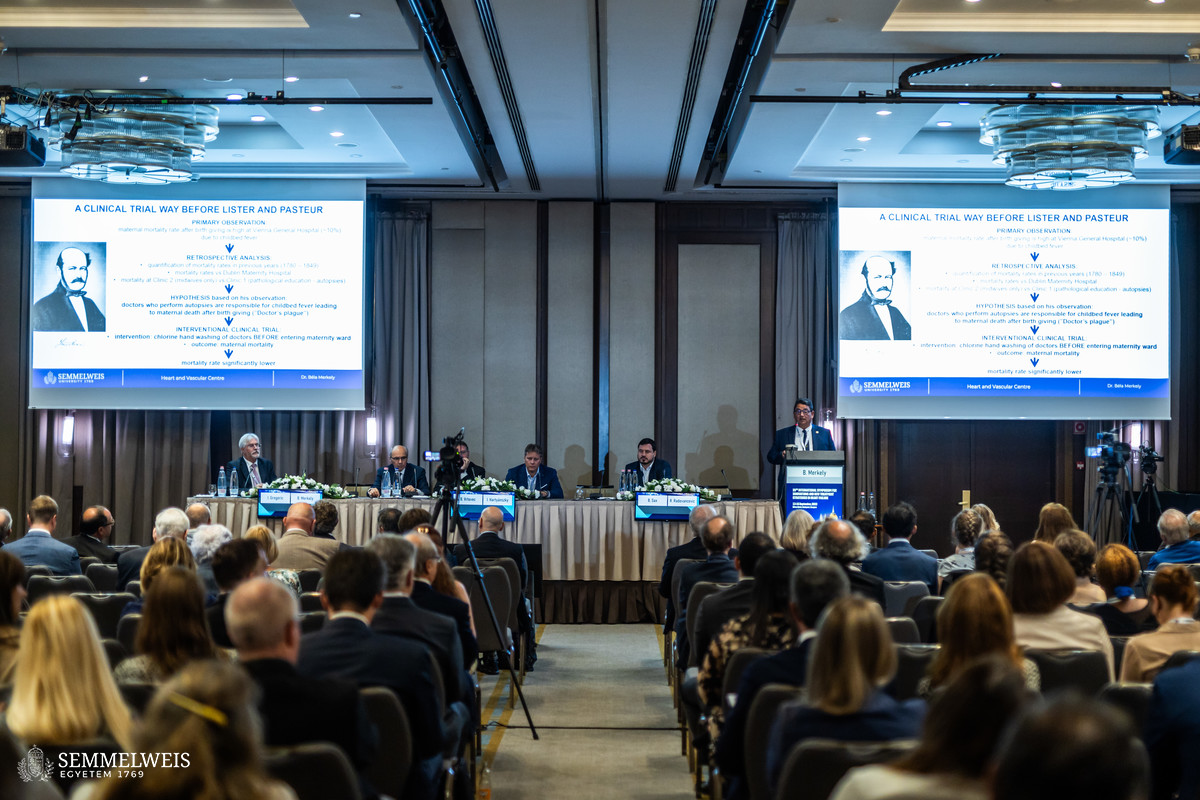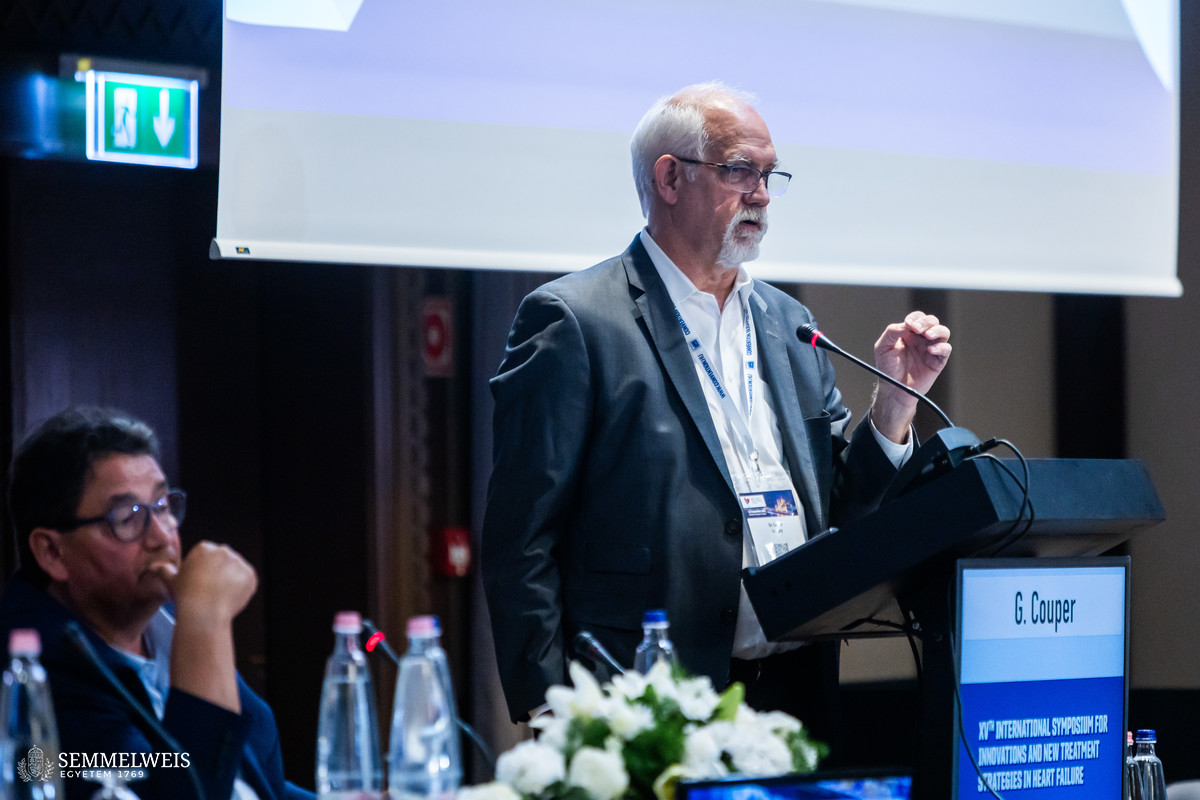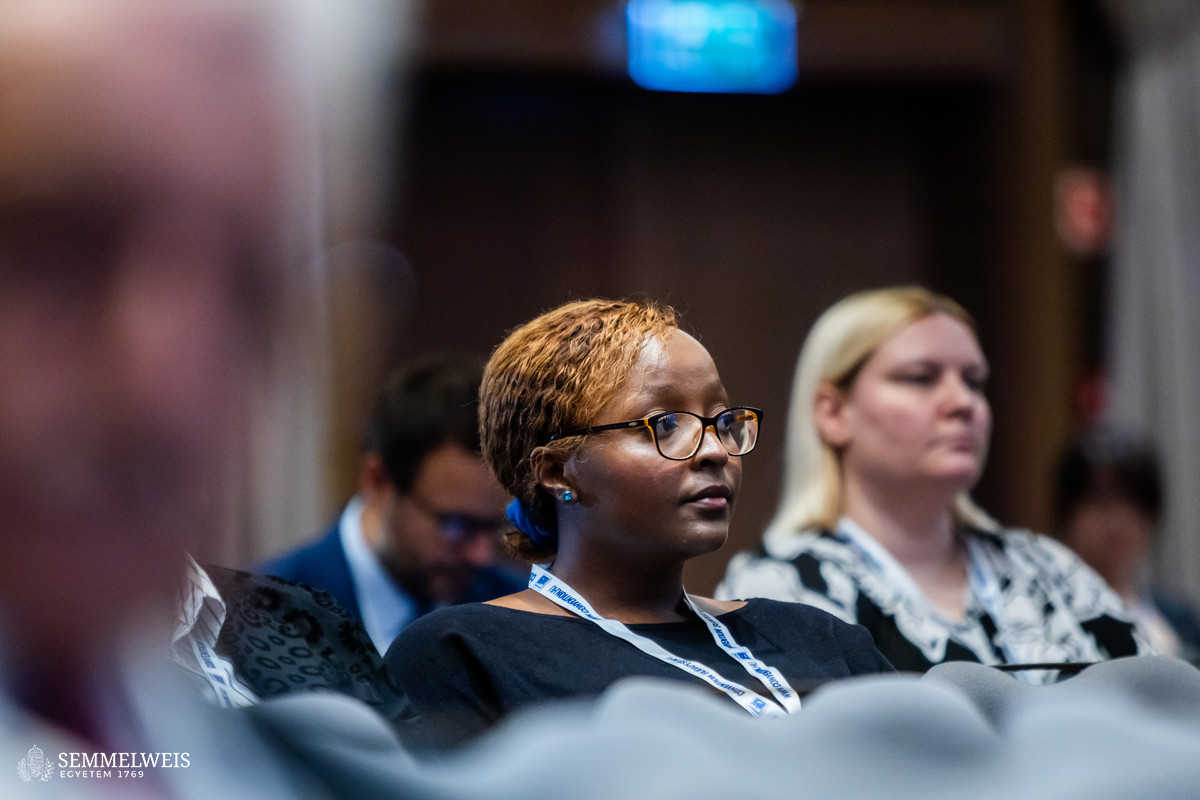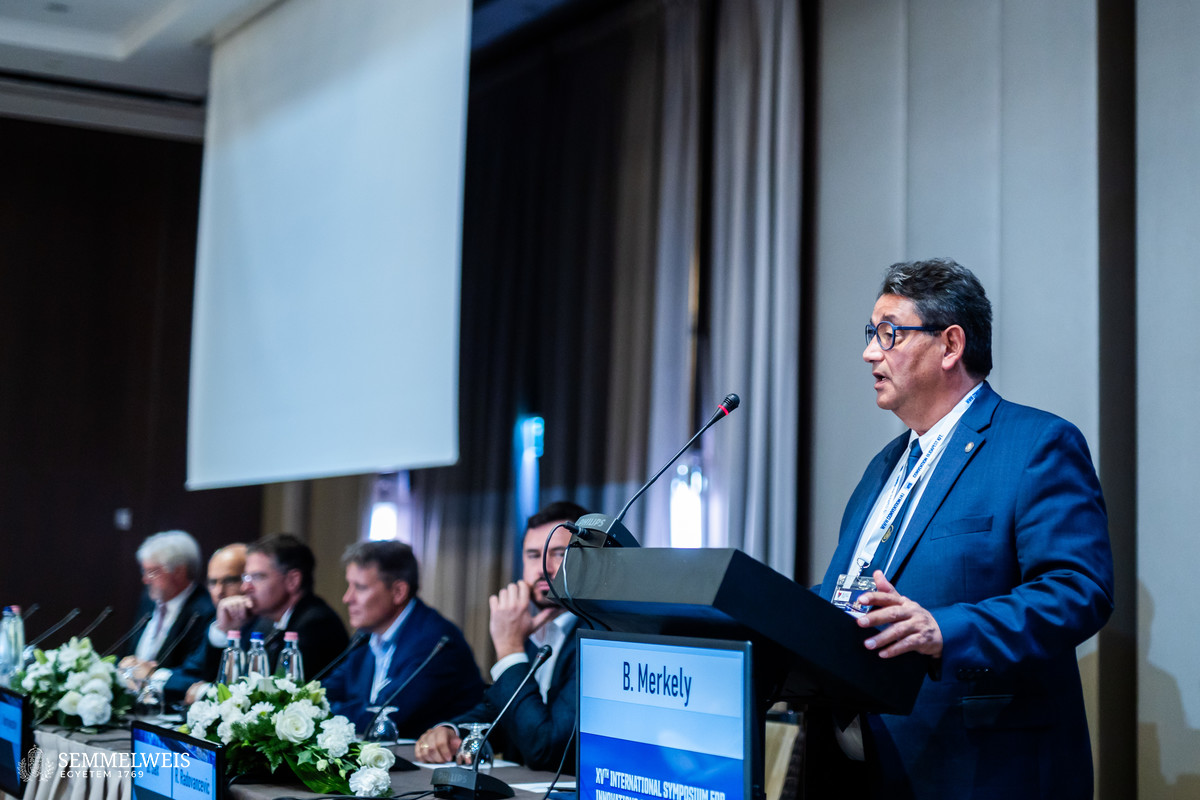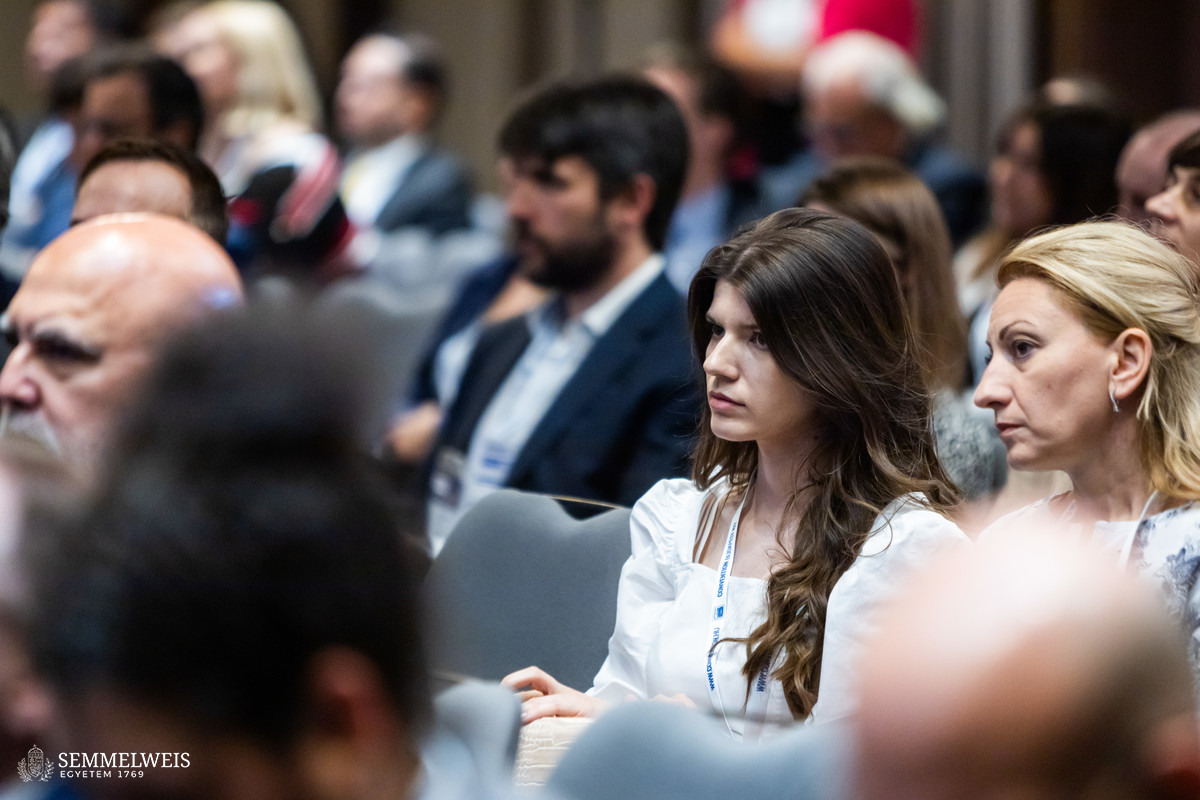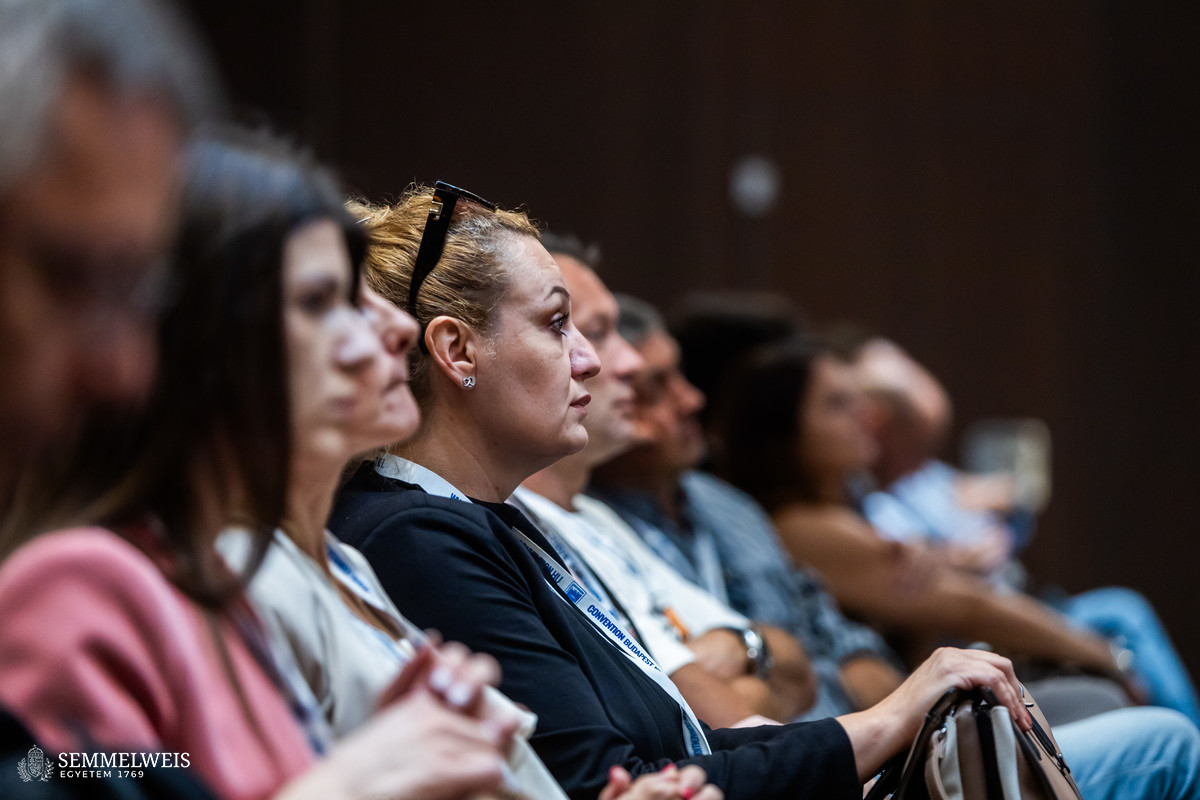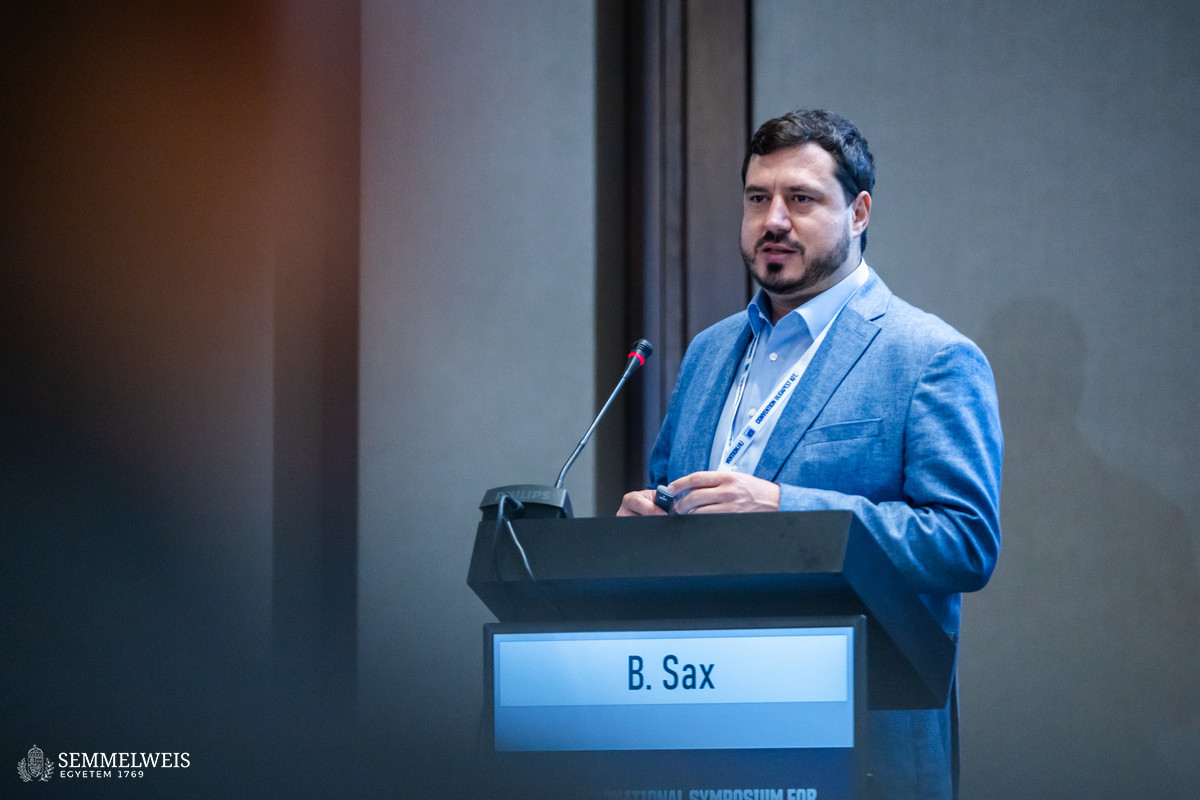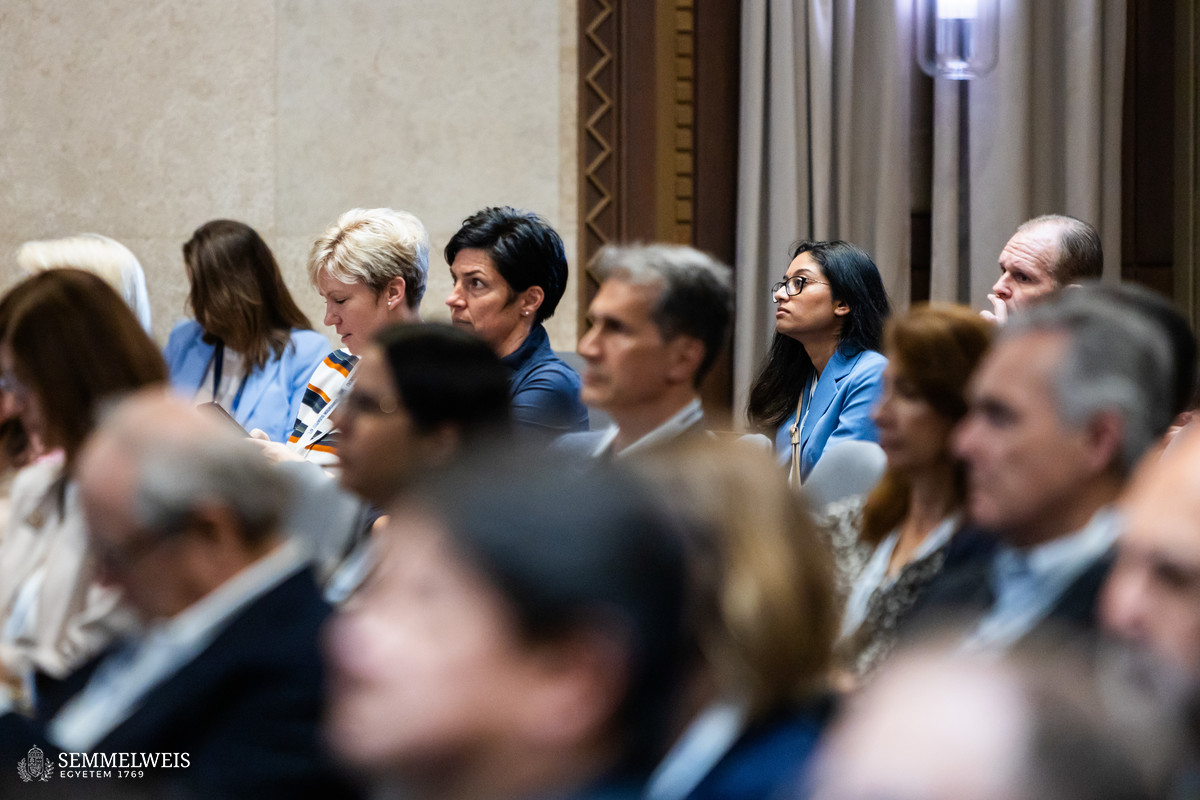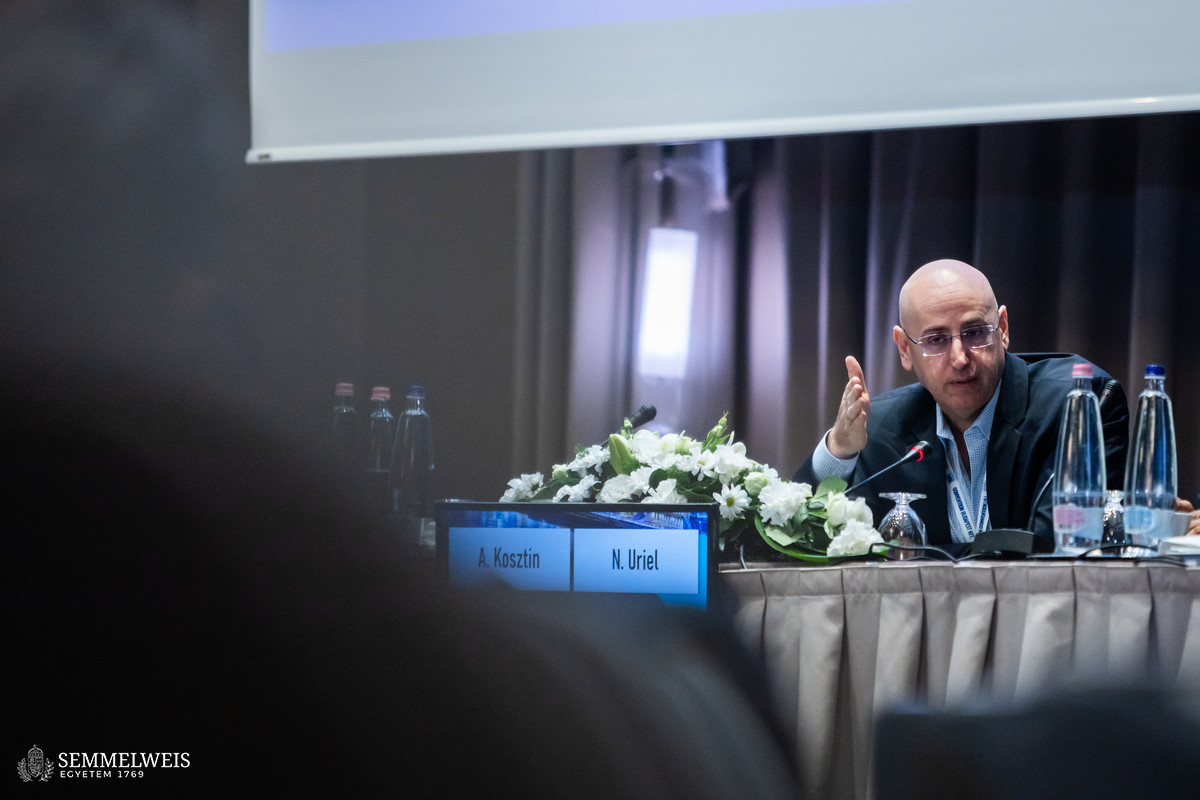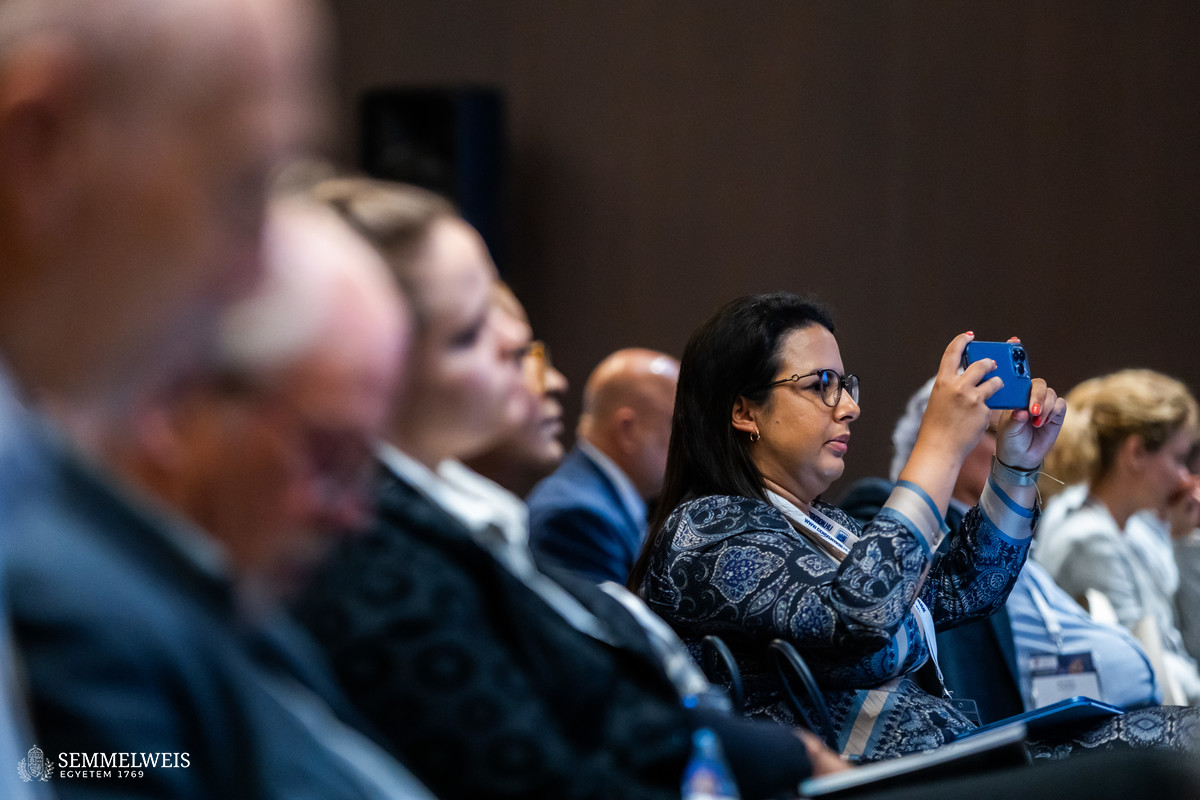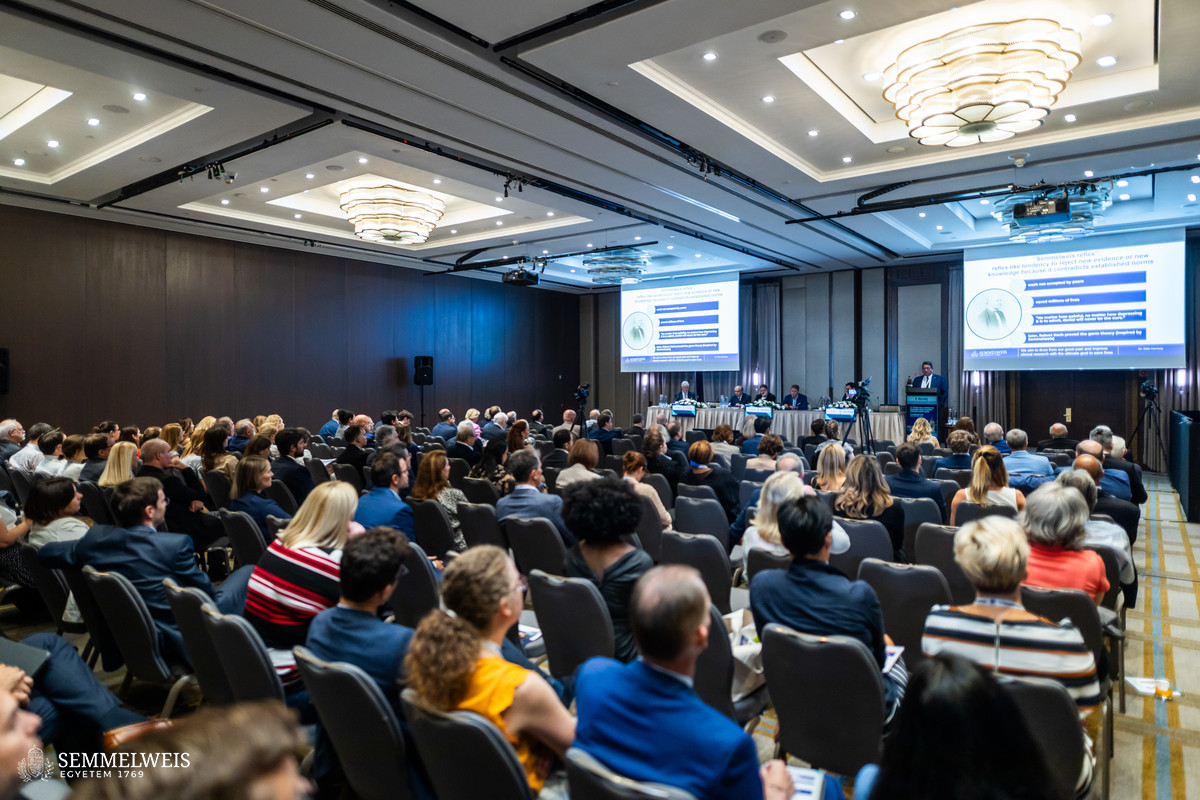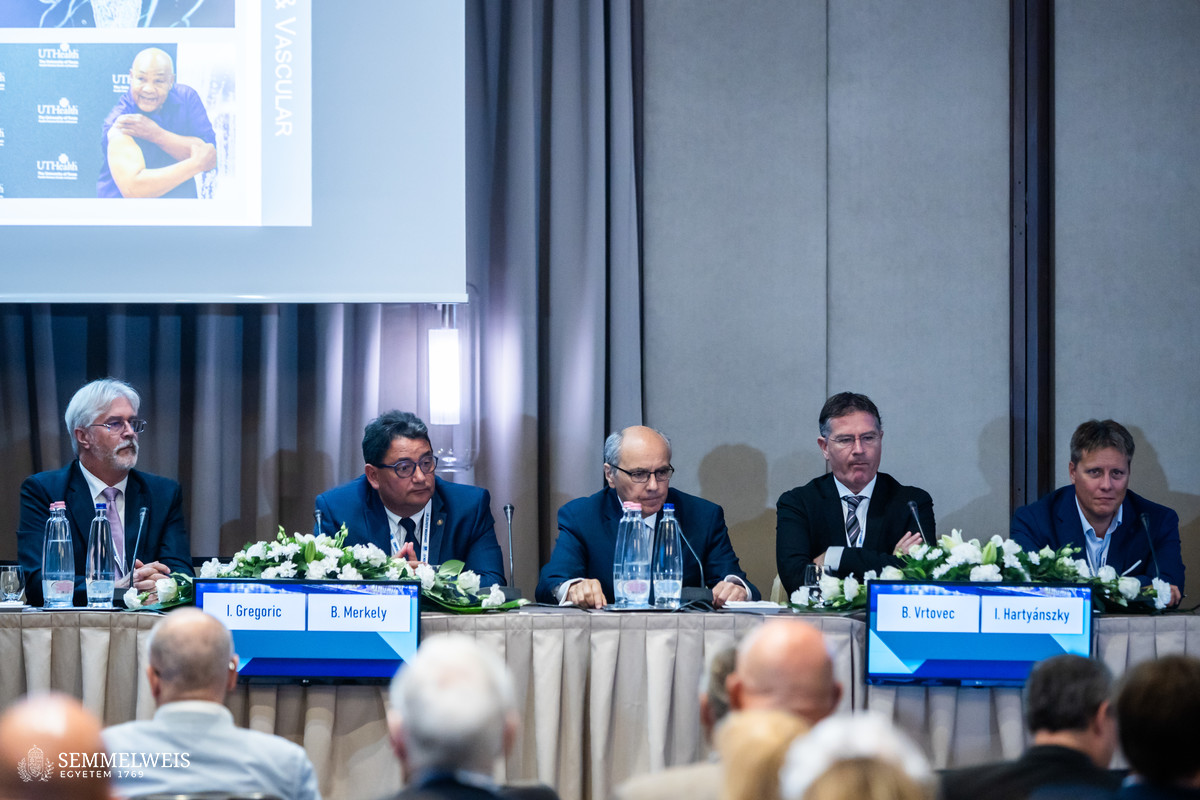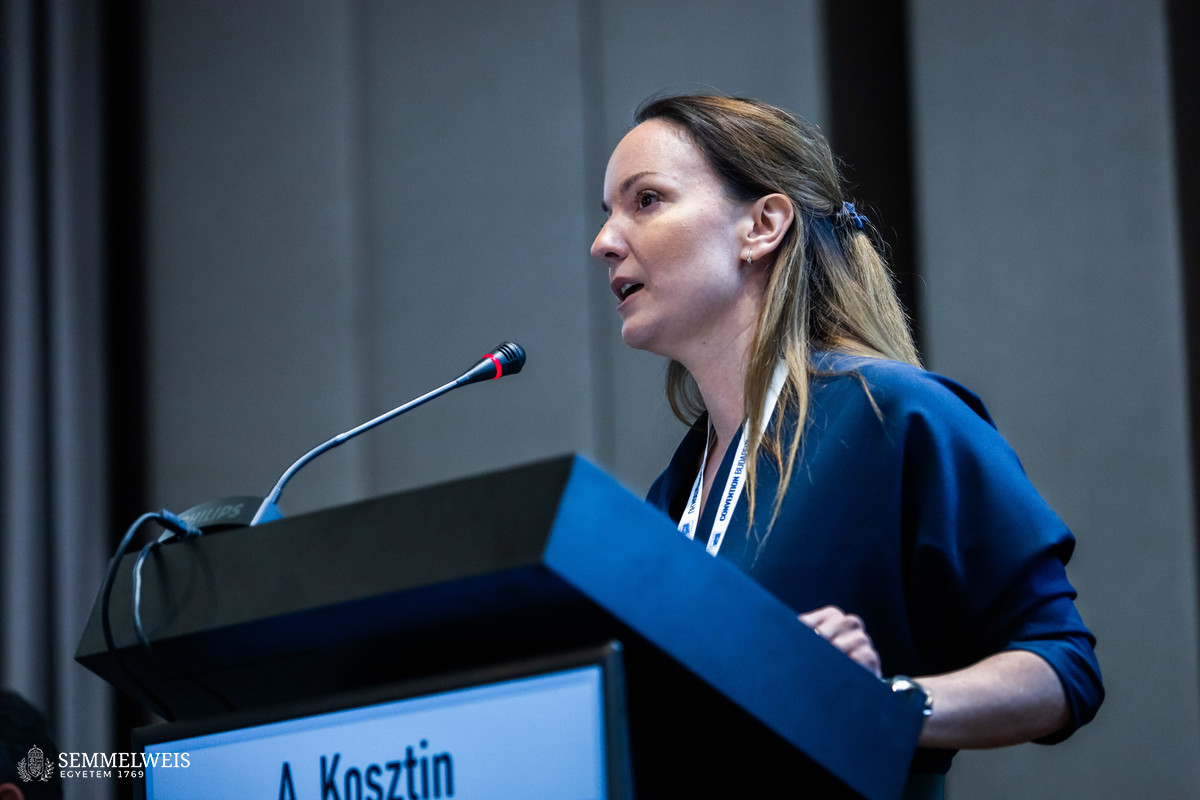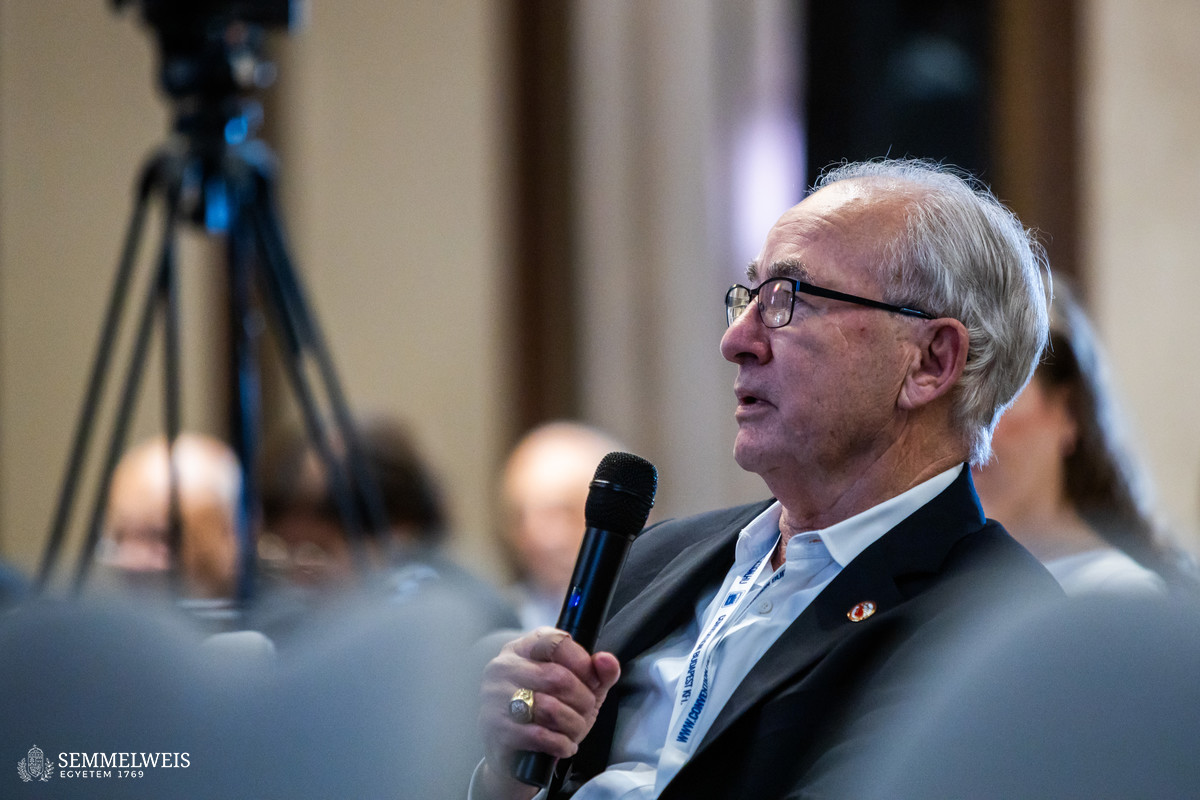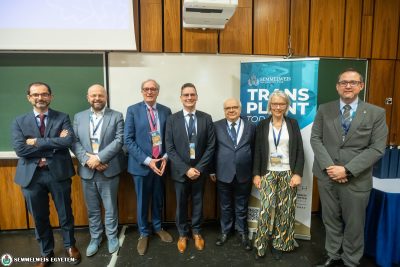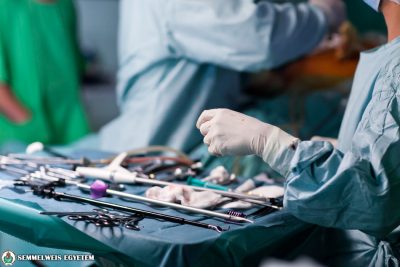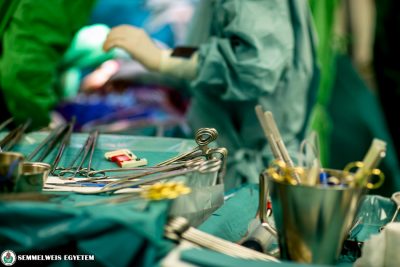The conference, organized for the 15th time this year, is dedicated to the memory of Branislav “Brano” Radovancevic, a talented heart surgeon of Yugoslavian origin who worked in Texas to become the director of the local heart center, but passed away prematurely. Each year, the symposium covers current topics in heart failure, heart transplantation and mechanical circulatory support in a Central European city. Half of the speakers, friends of the deceased surgeon, are from the United States. They are leading heart transplant surgeons and cardiologists of the USA, heads of the most important professional centers and organizations, international experts, while the other half of the speakers come from the region and Western Europe. Speakers included Professors Paul Mohacsi, Ivan Netuka, Andreas Zuckermann, Nir Uriel, Professor Sharon Hunt, who was involved in the first heart transplant in the USA, Howard O. Frazier, who had been working on designing artificial hearts, and many others.
In his opening speech, Rector Dr. Béla Merkely welcomed the audience on behalf of Semmelweis University, highlighting that in its more than 250 years of history, the institution has always stood its ground, even at historic turning points, as its triple mission has always been to serve the interests of patients and the vulnerable.
In his keynote presentation, Dr. Béla Merkely described in detail the activities of the university, its international rankings, the increase in both the number of doctoral students and publications. He recalled that in 2013, UNESCO declared some of Ignác Semmelweis’ publications on puerperal fever a Memory of the World, making the institution’s namesake a historical trademark that commits the university to the highest quality of education, scientific excellence and patient care. In presenting the achievements of the ‘savior of mothers’, he warned against the Semmelweis reflex, the instinctive rejection of new discoveries that contradict old norms, which the 19th century physician was confronted with, drawing the aphoristic conclusion that “no matter how painful, no matter how depressing it is to admit, denial will never be the cure.”
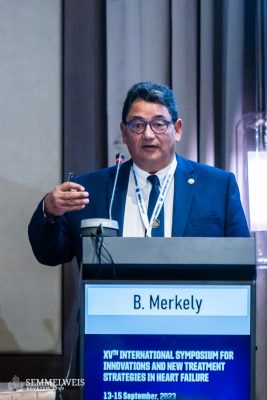 It is with this intellectual heritage that Semmelweis University continues its academic, research and therapeutic activities to this day, emphasized the Rector, who has been the Director of the Városmajor Heart and Vascular Center since 2012. As he pointed out, the first heart transplantation in Hungary, successfully performed at the center in 1992, laid the foundation for the practice of heart transplantation in Hungary, as a result of which and with the rise of translational medicine, the number of heart transplants had been steadily increasing since 2012, peaking at 64 cases in 2019. Although the coronavirus pandemic has set back the number of interventions and donations internationally, it is likely that by the end of this year, the number of transplants in Hungary will again reach the average of 50 per year, for the first time since the 2020. As Europe’s leading cardiovascular clinic, the Városmajor Center treats a large number of patients with a full spectrum of cardiovascular diseases, with the support of the Transplantation Biobank, a structured database and multicenter randomized clinical trials. In the concluding part of his presentation, the rector presented the SEMMELWEIS-CRT score risk assessment system based on artificial intelligence, developed at the Városmajor Center and the conclusions of the Budapest-CRT clinical trial, the outstanding result of a decade of work.
It is with this intellectual heritage that Semmelweis University continues its academic, research and therapeutic activities to this day, emphasized the Rector, who has been the Director of the Városmajor Heart and Vascular Center since 2012. As he pointed out, the first heart transplantation in Hungary, successfully performed at the center in 1992, laid the foundation for the practice of heart transplantation in Hungary, as a result of which and with the rise of translational medicine, the number of heart transplants had been steadily increasing since 2012, peaking at 64 cases in 2019. Although the coronavirus pandemic has set back the number of interventions and donations internationally, it is likely that by the end of this year, the number of transplants in Hungary will again reach the average of 50 per year, for the first time since the 2020. As Europe’s leading cardiovascular clinic, the Városmajor Center treats a large number of patients with a full spectrum of cardiovascular diseases, with the support of the Transplantation Biobank, a structured database and multicenter randomized clinical trials. In the concluding part of his presentation, the rector presented the SEMMELWEIS-CRT score risk assessment system based on artificial intelligence, developed at the Városmajor Center and the conclusions of the Budapest-CRT clinical trial, the outstanding result of a decade of work.
In the subsequent sessions, around a hundred speakers explored the broadest possible range of heart failure issues.
The agenda included acute mechanical circulatory support, structural heart disease and the treatment options and challenges of advanced heart failure. Presentations were given on, among others, the latest innovations in implantable ventricular assist devices (LVADs), the pharmacological therapies in heart failure, challenges in mechanical circulatory support as well as heart failure pathology and diagnostics. Participants of the symposium were presented manufacturers’ novel technologies under accreditation, experiences with the new American allocation system for heart transplantation, and speakers also discussed the challenges, hot topics and management following and related to heart transplantation.
From Semmelweis University, Clinical Chief Physician Dr. Andrea Astrid Apor presented on imaging of structural heart disease interventions, Head of Department Dr. István Hartyánszky on 3D modeling in heart surgery and Dr. Marcell Székely on the first results obtained with a newly developed artificial heart cannula. Professor Dr. Csaba Bödör gave a presentation on next-generation sequencing and other advanced technologies, Assistant Professor Dr. Attila Fintha spoke about molecular microscopy results, Clinical Specialist Dr. Tímea Teszák shared the first European experience with donor-derived cell-free DNA surveillance of heart transplant recipients and Assistant Professor Dr. Balázs Sax discussed the treatment of rejection by using a special photopheresis method.
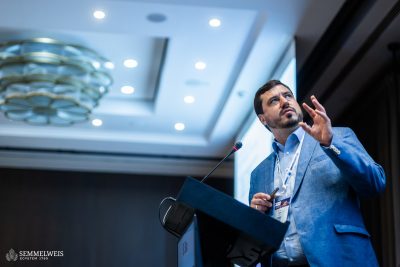 The session “Update on Regional End-Stage Heart Failure Programs” was opened by Assistant Professor and Chief Clinical Physician Dr. Balázs Sax, with a presentation on the experiences related to heart transplantation and mechanical circulatory support at Semmelweis University. As he explained, the university has so far performed heart transplants for 713 adults, with 88 LVAD implants used since 2012. 3D printing technology as well as cell-free DNA analysis from the donor are being used in clinical practice. The mental health of heart transplant recipients is supported by the Healthy Soul in New Heart Program. An obstacle to overcome is the shortage of waiting lists, which is being addressed through an awareness campaign focusing on heart failure.
The session “Update on Regional End-Stage Heart Failure Programs” was opened by Assistant Professor and Chief Clinical Physician Dr. Balázs Sax, with a presentation on the experiences related to heart transplantation and mechanical circulatory support at Semmelweis University. As he explained, the university has so far performed heart transplants for 713 adults, with 88 LVAD implants used since 2012. 3D printing technology as well as cell-free DNA analysis from the donor are being used in clinical practice. The mental health of heart transplant recipients is supported by the Healthy Soul in New Heart Program. An obstacle to overcome is the shortage of waiting lists, which is being addressed through an awareness campaign focusing on heart failure.
If we do our job well enough, we will see such smiling faces,
the speaker referred to patients like the Hungarian table tennis player, mother of seven, who successfully participated in the Australian 2023 World Transplant Games, or the heart transplant recipient playing music with his surgeon at the annual meeting of transplant patients.
 The session entitled “Therapeutic options in patients with sustained and recurrent ventricular tachycardia” was moderated by Rector Dr. Béla Merkely. Assistant Professor and Chief Clinical Physician Dr. Annamária Kosztin presented new results in cardiac resynchronization therapy in heart failure. As she underlined, around one million pacemakers or ICDs are implanted worldwide each year, however, 30 percent of patients develop left ventricular systolic dysfunction, which can lead to adverse clinical outcomes or heart failure hospitalization. The Budapest-CRT Upgrade is the first clinical trial to show, based on primary endpoints, that implanting an additional lead in patients with a pacemaker can improve heart function to the greatest extent ever, reducing the risk of hospitalization or mortality.
The session entitled “Therapeutic options in patients with sustained and recurrent ventricular tachycardia” was moderated by Rector Dr. Béla Merkely. Assistant Professor and Chief Clinical Physician Dr. Annamária Kosztin presented new results in cardiac resynchronization therapy in heart failure. As she underlined, around one million pacemakers or ICDs are implanted worldwide each year, however, 30 percent of patients develop left ventricular systolic dysfunction, which can lead to adverse clinical outcomes or heart failure hospitalization. The Budapest-CRT Upgrade is the first clinical trial to show, based on primary endpoints, that implanting an additional lead in patients with a pacemaker can improve heart function to the greatest extent ever, reducing the risk of hospitalization or mortality.
Patients of heart failure with reduced ejection fraction with an implanted pacemaker or ICD device should be strictly followed in clinical practice and, if necessary, the intervention should be performed without delay to avoid or reduce the risk of further adverse events,
the expert emphasized.
The three-day conference attracted 300 participants from 15 countries, with speakers from academic, research and therapeutic institutions from Austria, Belgium, Croatia, the Czech Republic, France, Germany, Hungary, Italy, Kazakhstan, North Macedonia, Russia, Serbia, Slovenia, Sweden, Switzerland, Turkey, the United Kingdom and the United States of America. In addition to its high professional prestige, the symposium also provided an opportunity to strengthen the medical school bonds between Semmelweis University and the University of Texas.
Judit Szabados-Dőtsch
Photo: Bálint Barta – Semmelweis University
